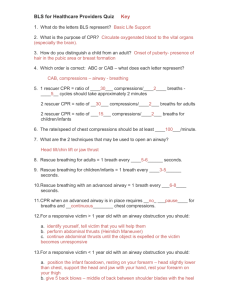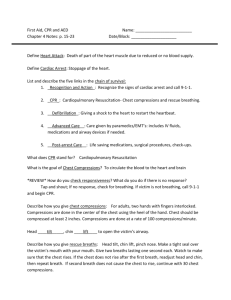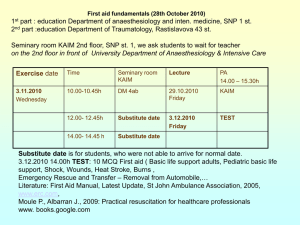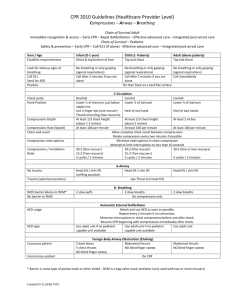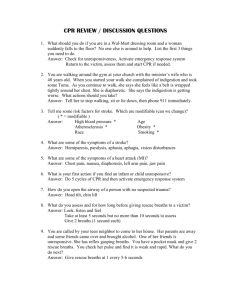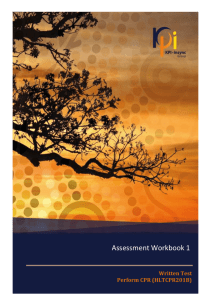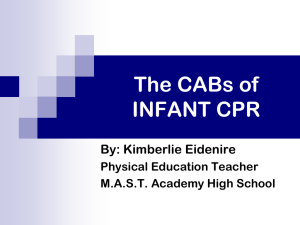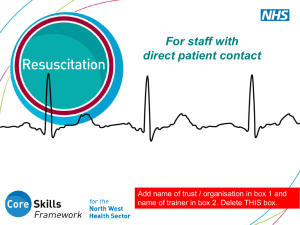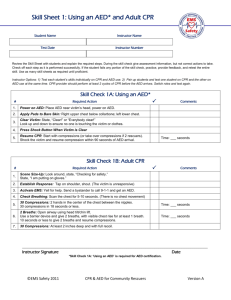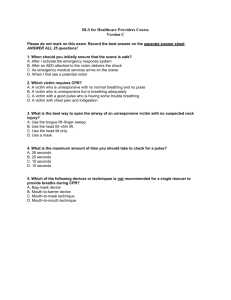CPR Review: Adult, Child, and Infant Guidelines
advertisement
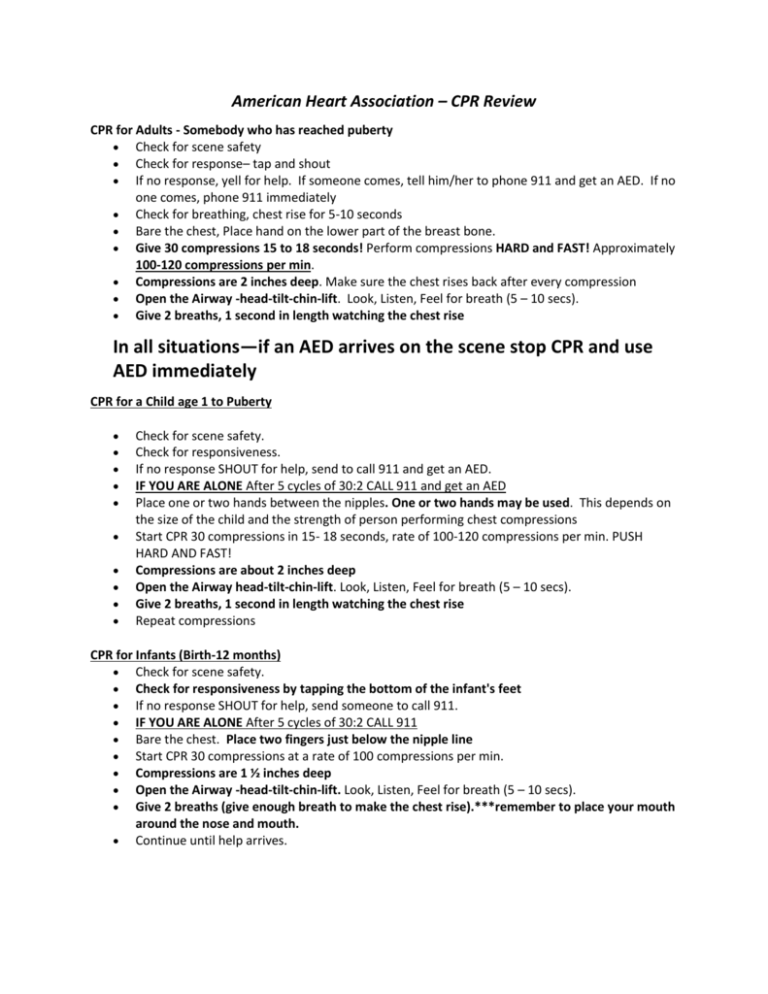
American Heart Association – CPR Review CPR for Adults - Somebody who has reached puberty Check for scene safety Check for response– tap and shout If no response, yell for help. If someone comes, tell him/her to phone 911 and get an AED. If no one comes, phone 911 immediately Check for breathing, chest rise for 5-10 seconds Bare the chest, Place hand on the lower part of the breast bone. Give 30 compressions 15 to 18 seconds! Perform compressions HARD and FAST! Approximately 100-120 compressions per min. Compressions are 2 inches deep. Make sure the chest rises back after every compression Open the Airway -head-tilt-chin-lift. Look, Listen, Feel for breath (5 – 10 secs). Give 2 breaths, 1 second in length watching the chest rise In all situations—if an AED arrives on the scene stop CPR and use AED immediately CPR for a Child age 1 to Puberty Check for scene safety. Check for responsiveness. If no response SHOUT for help, send to call 911 and get an AED. IF YOU ARE ALONE After 5 cycles of 30:2 CALL 911 and get an AED Place one or two hands between the nipples. One or two hands may be used. This depends on the size of the child and the strength of person performing chest compressions Start CPR 30 compressions in 15- 18 seconds, rate of 100-120 compressions per min. PUSH HARD AND FAST! Compressions are about 2 inches deep Open the Airway head-tilt-chin-lift. Look, Listen, Feel for breath (5 – 10 secs). Give 2 breaths, 1 second in length watching the chest rise Repeat compressions CPR for Infants (Birth-12 months) Check for scene safety. Check for responsiveness by tapping the bottom of the infant's feet If no response SHOUT for help, send someone to call 911. IF YOU ARE ALONE After 5 cycles of 30:2 CALL 911 Bare the chest. Place two fingers just below the nipple line Start CPR 30 compressions at a rate of 100 compressions per min. Compressions are 1 ½ inches deep Open the Airway -head-tilt-chin-lift. Look, Listen, Feel for breath (5 – 10 secs). Give 2 breaths (give enough breath to make the chest rise).***remember to place your mouth around the nose and mouth. Continue until help arrives. Relief of Choking in the Adult and Child Ask the victim “Are you choking?” if the victim nods yes Ask the victim “Can I Help?” if the victim nods yes Position yourself behind the victim one foot between victim’s feet for stability (standing for adult, kneeling for child) place one fist turned up with the thumb slightly above the navel but well below the breastbone. The other hand clasping the first fist. For a pregnant women position the thumb side of fist against the body over the breast bone (nipple line) and perform chest thrusts Thrust inward and upward with enough force to expel the object. Continue to thrust until the object is expelled or the victim becomes unresponsive. If the object is expelled, have the victim see a healthcare professional for further evaluation. If the Adult victim becomes unresponsive, call 911 and get an AED. Open the airway and remove the object if you see it, then begin CPR. Check the Airway every time before giving breaths during CPR. If the Child victim becomes unresponsive, Open the airway, remove the object if you see it, and begin CPR. After 5 cycles Call 911 and get an AED. Check the Airway every time before giving breaths during CPR. Relief of Choking in an Infant birth -12 months. Signs of Severe Airway Obstruction Poor / no air exchange / weak ineffective cough / no cough at all/turning blue around mouth. Kneel / sit/standing with infant 5 back thrusts, 5 chest thrusts, continue until object is expelled or infant becomes unresponsive. If object is expelled take infant to a Healthcare provider for further evaluation. If object is not expelled and infant becomes unresponsive, Open the airway, remove the object if you see it, and begin CPR. After 5 cycles CALL 911 and get an AED. Check the Airway every time before giving breaths during CPR.

